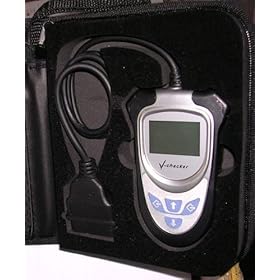
Note to Reader: The following tips apply to “pre-winter” and ‘middle of the season’ winter maintenance. Now, just because winter has started, it doesn’t mean you should neglect your duties as a car owner. I was actually looking for a better word apart from “duties” to describe what you need to do to help keep your car in tiptop condition during these cold months, but I couldn’t find any. Yes, you have a duty to keep your car in great shape. While vehicle maintenance may not seem like a pressing duty these days, neglecting simple things like auto tune ups can eventually lead to costly reparations, or worse, expensive auto-part or entire-vehicle replacement.
Tip #8: Conduct a Tune-Up!
Now if you’re a responsible vehicle owner, then you already know the importance of regular tune ups. But in case you missed my previous posts on this topic (multi-posts at that!) then I’ll give you two reasons why you should conduct regular auto tune ups: (1) It helps keep your car performing at its best by making sure your engine and ignition components are in great shape, and (2) it helps you catch small auto issues before they become full-blown, migraine-inducing, automotive problems—possibly saving you hundreds of dollars in the long run.
While a couple of auto breakdowns during the warmer seasons may seem like “petty issues” to some of us, it’s a completely different story when you find yourself stranded in the middle of nowhere in the dead of winter with a busted car. When you feel
every muscle in your body starting to freeze when you step out of your car, then you’ll know you’re in deep trouble. Avoid turning into a human popsicle by making sure your car is in great shape before, during, and even after the winter season.
Because broken fan belts, hoses-gone-bad, frozen water pumps, arcing ignition wires, and malfunctioning distributor rotors and caps, are the usual culprits when it comes to auto breakdowns, it’s better to make sure each one of these auto units are in good condition before embarking in any long winter trips.
I know that the word “tune-up” can encompass virtually anything and everything that has to do with repairs and replacements, that’s why we’re going to be tackling some of the most important steps you shouldn’t forget when conducting a tune-up. If you decide to do a little “extra” work on your car, then that’s good news for both you and your car! If you don’t have the time to go through every single component in your vehicle, then I suggest checking at least the following:
Misc. Tip
Its widely known that winter time brings with it more auto expenses. Auto accident rates skyrocket with snow and icy conditions. Proper maintenance will certainly help you and your auto be better prepared for these conditions. In the mean time you might want to check out some cheap auto insurance savings tips as there is a very good chance you will have even minor accidents this winter.

Step #1: Check your tire pressure levels. If you don’t have the tools to check your tire pressure levels, then you can ask your local mechanic to do it for you—sometimes even for free! But since it’s Christmas, you might want to leave a nice tip for your mechanic.
If your vehicle has built-in tire pressure monitors, then you won’t have to worry about frequent tire checks, since these monitors should alert you when there are drastic changes in your car’s tire pressure levels. But if you notice one or all of your tires going soft gradually, then it’s best to still conduct a manual check once in a while.

Spark Plug Wires



 Posted by autofrankie
Posted by autofrankie 









